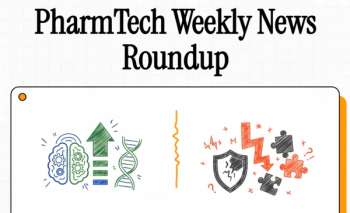
PTSM: Pharmaceutical Technology Sourcing and Management
- PTSM: Pharmaceutical Technology Sourcing and Management-04-03-2013
- Volume 9
- Issue 4
GlaxoSmithKline Tops Industry Rankings for Access to Medicines
The Access to Medicines Index shows that pharmaceutical companies are increasing drug development for the developing world and using more tiered pricing mechanisms to lower pricing.
The latest Access to Medicine Index, which ranks the top 20 pharmaceutical companies on their efforts to improve access to medicine in developing countries, finds that the industry is doing more than it was two years ago, the last time the index was published. GlaxoSmithKline continues to hold the top position followed by Johnson & Johnson and Sanofi
The Access to Medicine Index is published by the Access to Medicine Foundation, a nonprofit organization based in the Netherlands. The index methodology was developed and is continually refined in consultation with multiple stakeholders, including the World Health Organization, nongovernmental organizations, governments and universities, as well as 30 institutional investors. The index is funded by the Bill & Melinda Gates Foundation, the Dutch Ministry of Foreign Affairs, the UK Department for International Development, and other charitable organizations. It scores companies on their commitments, performance, innovation and level of transparency across seven areas of activity considered key to improving access to medicine. The companies are graded on more than 100 factors covering these areas, including whether they are developing new drugs for neglected diseases, to what extent they facilitate or resist efforts to create generic versions of their drugs, and how they approach pricing in developing countries. Lobbying activities, marketing ethics, product donations, and other philanthropic activities are also tracked.
Ranking highlights
GlaxoSmithKline remains at the top of the index with a marginal improvement in performance since 2010. Johnson & Johnson and Sanofi, both new to the top three, closely follow in the second and third positions, respectively. The companies that rose in rank the most were Merck KGaA, followed by Johnson & Johnson, and tBayer. AstraZeneca fell down the rankings most significantly, followed by Boehringer Ingelheim, Novartis, and Roche. The bottom of the rankings is dominated by Japanese companies Takeda, Daiichi, and Astellas.
The index found that Johnson & Johnson was one of the most dramatic risers, climbing from the middle of the field in ninth position in the 2010 rankings to second this year, closely behind GlaxoSmithKline. Its rise is due largely to its consolidation of its access activities under one business unit, which has resulted in a more strategic and integrated approach, and to its acquisition of vaccine maker Crucell, which has increased the relevance of its R&D investments. It has also disclosed more overall about its access activities.
Sanofi has a proactive approach to increasing access with a CEO-ledstrategy that results in strong performance in public policy and marketinfluence, a large investment in R&D, and good practice in the management of clinical trials, according to the index analysis. It also has a particular commitment to advancing capabilities in developing countries and to relevant product donation and philanthropy. The company is less consistent in its approach to equitable pricing, where it is an average performer and although only ranked middle of the field in patents and licensing, it has made improvements in this area.
A notable riser in the index is Merck KGaA, up nine places and into the top 10. Despite being only a mid-sized company, it has improved performance in all areas. Its score improved considerably due to its detailed disclosure around its tiered pricing schemes. Significant progress can be seen in its approach to building developing world capacities in anticounterfeiting and drug-safety monitoring and also in product donation, philanthropy, and R&D.
Bayer has risen five places since 2010, ranking ninth this index, largely due to an improved management approach, the establishment of targets foraccess initiatives, and an intra-country four-tiered differential pricingscheme. Its score also benefited from increased transparency about itsapproach and initiatives and about its stance on intellectual property issues.
Upward trends
“This year’s Index shows that companies are becoming more organized internally in their approach to access to medicine and that those who do this best tend to perform well across the other aspects we measure. The leaders are really raising the bar,” said Wim Leereveld, founder and CEO of the Access to Medicine Index, in a press release. “It’s also clear that companies that do not continue to step up their efforts tend to be overtaken by their peers.”
The 2012 index finds that more than 60% of companies now have directboard ownership of access to medicine and that more companies are settingmeaningful targets. Among the highest-ranked companies, there’s an ever-increasing organizational focus. Dedicated access functions are being established and incentives to deliver access objectives are becoming more common and are increasingly supported by performance-management systems.
For instance, Index leader GlaxoSmithKline has, since the last index report in 2010, established a Developing Countries and Market Access unit as a department dedicated to access, bringing all its businesses in least -developed countries under one umbrella, supported by a new lower price/highervolume business model. Notably, the bonus system for managers in this new unit is structured to reward volume growth rather than profit growth. Three other companies in the top five (Johnson & Johnson, Sanofi and Gilead) as well as Eisai have also created similar dedicated departments.
Many companies have increased investment in relevant R&Dand some now devote as much as 20% of their pipeline to developing new products and adapting existing ones to address the needs of the poor, according to the Access to Medicine press release. As well as investing more, companies are working together more often and sharing different types of information thatcan help advance various stages of R&D.
The primary focus continues to be communicable diseases with the highesthealth burden: low respiratory infections, diarrheal diseases, HIV/AIDS, malaria and tuberculosis. Although the neglected tropical diseases still receive insufficient investment, they are less neglected than in 2010 andhave received a significant funding boost from the private sector. Among thisgroup, African trypanasomiasis, leishmaniasis and Chagas disease receivethe most investment but there continues to be little, if any, investment forleprosy, soil-transmitted helminths, yaws, Buruli ulcer, dracunculiasis orfascioliasis, according to the analysis.
The use of inter-country and intra-country tiered pricing, where companies set different prices for the same product depending on the target country or population group within a country, is increasing, with more than three quarters of companies now engaged in it. The number of companies applying the approach within countries has increased from five in 2010 to 12 in 2012. The affordability impact of these schemes is uncertain partly because not all companies disclose the extent of their price reductions, but also because across companies that do disclose, there is little commonality in the way that pricing tiers are constructed and in the reference points used to calculate price reductions. It is therefore not possible to compare schemes in order to assess which companies are delivering affordability.
An additional two factors interfere with the industry’s attempt to use tieredpricing to lower prices, according to the analysis. Firstly, companies often do not monitor the extent of mark-ups that third-party sales agents add to the price of their drugs, which means that even if the company sets low prices, the patient mightstill be paying high marked-up prices. Secondly, while so few companies usedifferentiated packaging to prevent drugs meant for the poor being divertedand ending up in the hands of richer patients, there is a risk of medicines notbeing available for the intended communities and that revenues lost throughsuch market leakage could jeopardize the very sustainability of theseschemes.
However, there are still several areas where all companies could improve their approaches significantly. These include being more transparent about their lobbying practices, expanding their tiered -pricing schemes, adapting packaging to local needs, making their drug donations more needs-based, and allowing their clinical-trial data to be used to accelerate the approval of generic medicines in developing countries.Only four companies provide evidence that they use disciplinary measuresto enforce codes of conduct in relation to CROs they employ to conduct clinical trials on their behalf in developing countries.
Articles in this issue
over 12 years ago
Indian Supreme Court Rejects Patent for Glivec by Novartisover 12 years ago
Outsourcing of Non-traditional Protein Expression Systems Increasesover 12 years ago
The Plan by AstraZeneca CEO Pascal Soriot to Revitalize the Companyover 12 years ago
CSR and Sustainability in the NewsNewsletter
Get the essential updates shaping the future of pharma manufacturing and compliance—subscribe today to Pharmaceutical Technology and never miss a breakthrough.





